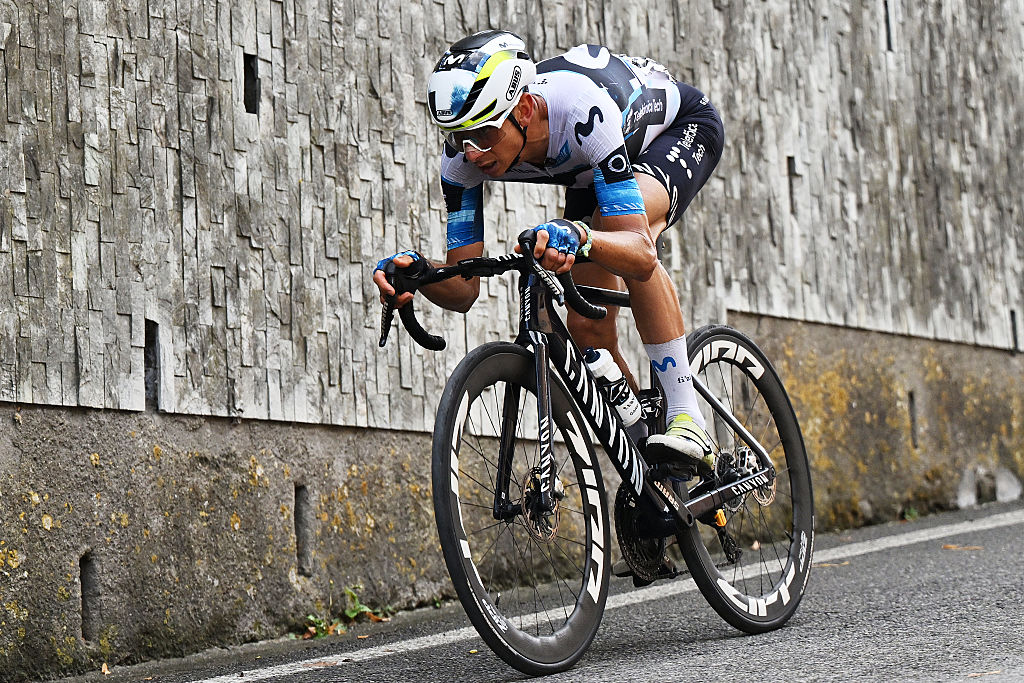I love the Giro d'Italia
Procycling magazine finds out what makes the Giro d'Italia so special
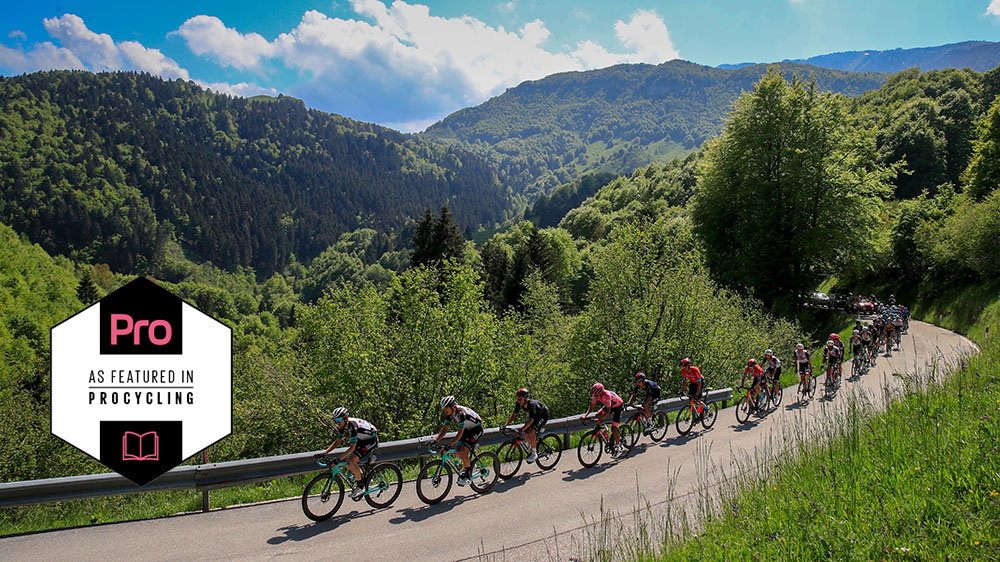
The Giro d’Italia stirs emotions like no other race. To understand its hidden depths, Procycling magazine speaks to the riders, staff and journalists with intimate knowledge of the corsa rosa.
This article was taken from Procycling magazine issue 255, May 2019.
Bruno Reverberi, Bardiani-CSF-Faizanè, team owner
“The one that brought tears to my eyes was Brett Lancaster winning us the prologue in Calabria in 2005. It was the first Giro of the ProTour-WorldTour era, and everyone was predicting it would be the death of the team. Keep in mind that I’d done my first Giro in 1982, and none of my riders had ever worn the maglia rosa. People had been criticising Carmine Castellano, the race director, for inviting us. They were saying that we wouldn’t be competitive, but we were. Then we won another stage with Luca Mazzanti later on, and we’ve been winning ever since – we’ve won 28 stages at the Giro d’Italia and that, if you think about it, is really quite something.
The other one would be the 1959 Giro, when I was 16. I’d always loved cycling but I’d just started racing and I was smitten. The third stage was Salsomaggiore Terme to Abetone, and it came through Reggio Emilia, my home town. There was a feed nearby, and I remember thinking I might get some souvenirs if I went there.
I had myself positioned in the hope that one of the soigneurs would give me something, or that one of the champions might throw something out and I’d be lucky. Nino Defilippis, who was a really big champion, threw his bidon, I was first to it, and I went home as pleased as punch. I went home and told anyone who would listen all about it. It was only a bidon, but it was my prized possession because it connected me with Defilippis and with the Giro. I used it every time I raced.”
Carmine Castellano, former Giro race director
“My abiding memory of the Giro – and probably my fondest memory – would be 1949. I was a 12-year-old growing up in Sorrento and like everyone else I was mad about cycling. We had Coppi and Bartali, but there was no TV and most of the racing was in the north. The best you could hope for was to see them in the newsreel at the cinema, but that only lasted a couple of minutes. Like all the kids at school, I was desperate to see them in the flesh, and I used to daydream they’d come to Sorrento one day.
The latest race content, interviews, features, reviews and expert buying guides, direct to your inbox!
I remember waiting for the Giro route to come out in the hope of being able to see them, but it was hopeless. There was a stage from Salerno to Naples, but it was on the Thursday. We were at school. It was this unrequited love, and the more impossible it seemed the more the love grew. During the Giro I’d get up in the morning, then run down the road to get the papers. I’d read as much as I could before school, and then head off. In reality, me and my friends were just waiting for school to finish. At one o’clock the bell would go, and I’d run home as fast as I could. The radio broadcast started after the news... I’d listen to that while I ate my lunch, and carry on until it finished. Then the evening papers would come out, and I’d devour those as well.”
Hubert Dupont, former rider, finished in the top 20 seven times
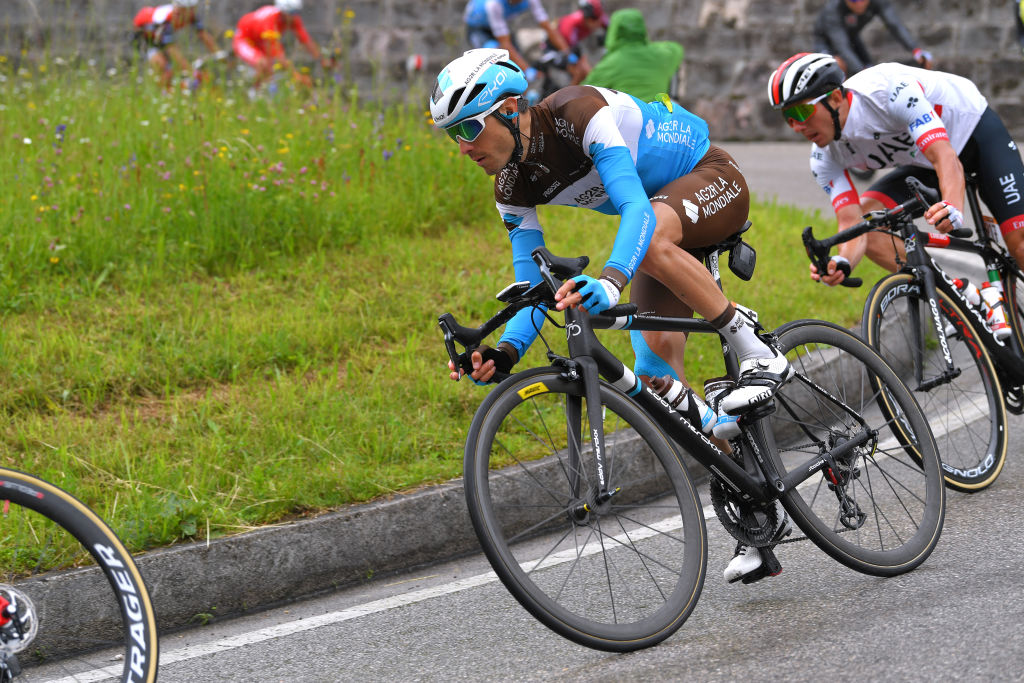
“My introduction to Italian races was the Giro della Valle d’Aosta and the Baby Giro. In fact, it was the Baby Giro which gave me the opportunity to turn pro – I won a stage there in 2004. That was when I fell in love with Italy – it started when I was an amateur and that continued when I was a pro. Likewise, the Giro d’Italia was the first grand tour I did as a pro in 2006. I got a fourth place on a stage that year, which is one of my best memories of the race.
I prefer to race the Giro than other grand tours because it fits my physical qualities much better. At the Tour, you get very long power climbs, but I’m better on steeper terrain. I’m good over three weeks, which means I can do a good GC, and I’m one of the last to get dropped in mountain stages.
My other impressions and memories of the race are less to do with results. I remember climbing the Stelvio in the snow in the 2014 race. For me, that was a real image of the Giro – a huge mountain, with capricious weather. I also remember puncturing once and waiting for a new wheel from the team car, looking around me and noticing that we were in a beautiful landscape, in a national park. It’s the only race where you get things like boat transfers, or starts on a different continent. You can drive through a tunnel in a long transfer, and when you come out the other side the landscape and weather are totally different to when you went in. It’s a race like no other.”
Jered Gruber, photographer
“It was the fourth stage of the 2013 Giro d’Italia. We were in the far southern reaches, in Calabria. My wife - and photographer - Ashley had stayed in Soriano Calabro to shoot. I had gone a way up the climb by bike and picked out a spot. I had what I thought was a cool shot on a photogenic switchback, but had it ruined by two ridiculous fans that ran alongside the still large field. I was angry. I returned to town fuming – convinced that the end of the world was nigh and that the missed shot would spell our demise, or something like that.
Then I see Ashley smiling and gesturing at me. She took my arm and we made our way through a maze of streets, accompanied by a smiling family. We get to a corner. A key slides into the lock, and we’re in a barber shop. He sits me down and lathers up my face. In that moment, just after a frustrating day of work, I got the first and only straight blade shave of my life. I had talked about getting one for years, and I probably would have kept talking about it for many more, but Ashley made friends with that family and asked them if they’d open the shop for five minutes after the race. I made peace with the photo. The fans didn’t ruin it, just the expectations I had of it in my head. To this day it was one of my favourite memories of Ashley being Ashley, and Italians being Italians.”
Taylor Phinney, Giro stage winner and pink jersey wearer
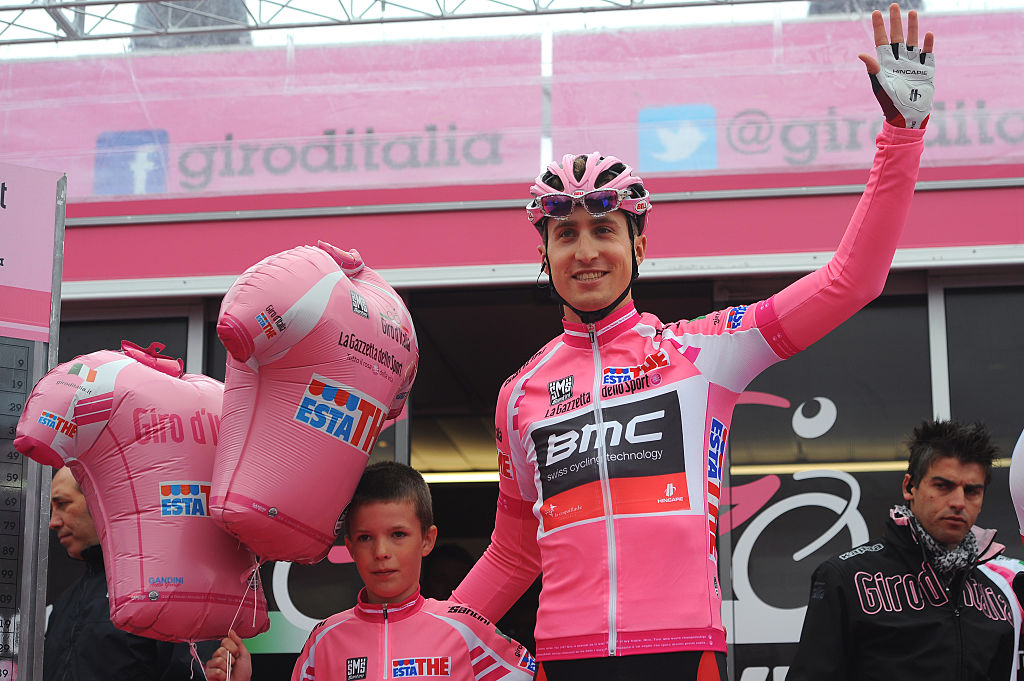
“For somebody big like me, the Giro is just a suffer fest, but in a good way. There’s not a lot of things you can do in three weeks that will physically change you as much as racing the Giro. The Giro in 2012 was the first grand tour I completed and it changed my body. It has never gone back to the state it was before that. When I went on Processo alla Tappa [Rai’s post-stage TV analysis show] I think they were surprised I spoke Italian and did so without this hideous accent. I was able to speak a little of the Veneto dialect, and they sucked that up for sure. I enjoyed it. I think being able to understand Italian and understand the Italian way of operating allows for more patience with the organisation and more communication with the audience. I wasn’t just another rider, another racing animal thrown into the ring.
I really wanted to finish my first grand tour. I lost 5kg or something. I had this radical body transformation. They throw these mega-long stages at you, the weather’s unpredictable and the way that it’s raced as well... the Tour is so much more organised and it’s generally easier to survive from a big person’s standpoint than the Giro. I spent 60 per cent of that first Giro off the back. The Giro’s the hardest.”
Alberto Contador, Giro winner 2008, 2015
“With the Giro d’Italia, it was love at first sight when I went there in 2008 – with the race and with Italian racing. And that was despite being forced to race it by Johan Bruyneel. I’d barely raced in Italy as a pro, so the Giro was a race I hardly knew. In a week, I’d been captivated, which was just as well because I’d told my team that I was going home after a week. I stayed, and then stayed a bit more, all the way to Milan. That was partly because of the way the Giro was and is still raced - very unstructured, very intuitive and difficult to control. That suited my style of racing, which was equally spontaneous. Also, the pressure from sponsors is lower in the Giro than it is in the Tour which is a huge plus for the riders. It means you can enjoy it more. On top of that, I liked the climbs in the Dolomites, in particular the Marmolada, with its amazing countryside.
But the thing I really liked most of all was that the people were very warm. The Italians really live the race in a way that I didn’t find happened with the French at the Tour. The Italians are always talking about it, and they were incredibly supportive of me. That’s what pushed me on in 2008. I ended up thinking they were more supportive of me than they were of my biggest rivals – some of their home riders.”
Stephen Farrand, journalist
“I love the Giro d’Italia because it is far more than just a bike race: it is a sporting metaphor for the Italians’ infallible love of life in an often chaotic country. Nobody is as enthusiastic as the Italian tifosi, waving their arms and shouting at the riders from a mountain roadside; nobody wants to meet the riders like the children in the south. Spring turns to summer during the Giro, bringing out the best of the country each day. As interest in the race increases so does the number of people wearing pink.
The Giro is a three-week crash course in Italian culture, sociology and, of course, gastronomy. I soon learned to imitate the Italian journalists who covered the Giro with a restaurant guide in the glove box of the car, a decent evening meal being the only moment to switch off after another long day on the road.
I first covered the Giro d’Italia as a journalist in 1994, when, like this year, it started in Bologna. Marco Pantani broke through that year and went on to inspire a new generation of tifosi before his Icarus-like fall and tragic death. The Italians are waiting for the next great campione, but will still cheer whoever lines up in Bologna and finishes in Verona. They did so with Froome last year and will do it again. I can’t wait to go back this year to savour the combination of the corsa rosa, la dolce vita, mortadella, the maglia rosa, Parmigiano, Lambruscho – and great bike racing.”
Dimitri Konyshev, former rider and directeur sportif
“I first raced the Giro in my first year as a pro, in 1989, with the Alfa Lum team. I was part of the first wave of former Soviet Union riders in the professional peloton. It was my first grand tour, so I was always trying to get in a break, do the sprints, do everything. I was racing like an amateur in a pro world. Normally when you turn pro, you learn the ropes from somebody more experienced. But as former Soviet Union riders, we had nobody to do that for us. We ended up breaking all the unwritten rules of the Giro.
So what were they? A maximum of three guys in the early break. No attacking from kilometre zero because the peloton was full of old people and they need time to warm up their engines. Then the last two hours were the complete opposite: they’d be flat out and I was always suffering. I ended up crashing out. Some spectator was trying to take a picture and I rode into his camera. We had an Italian director, Primo Franchini, but... the language barrier was a big wall. It took us many years to communicate. We had no race radio, no rider in charge of us, nobody to tell us what to do. Vladimir Poulnikov got 11th overall and got the young rider’s jersey, but we just raced however we wanted. It was fun - zero pressure and zero responsibility.”
Davide Formolo, UAE-Emirates, Giro stage winner
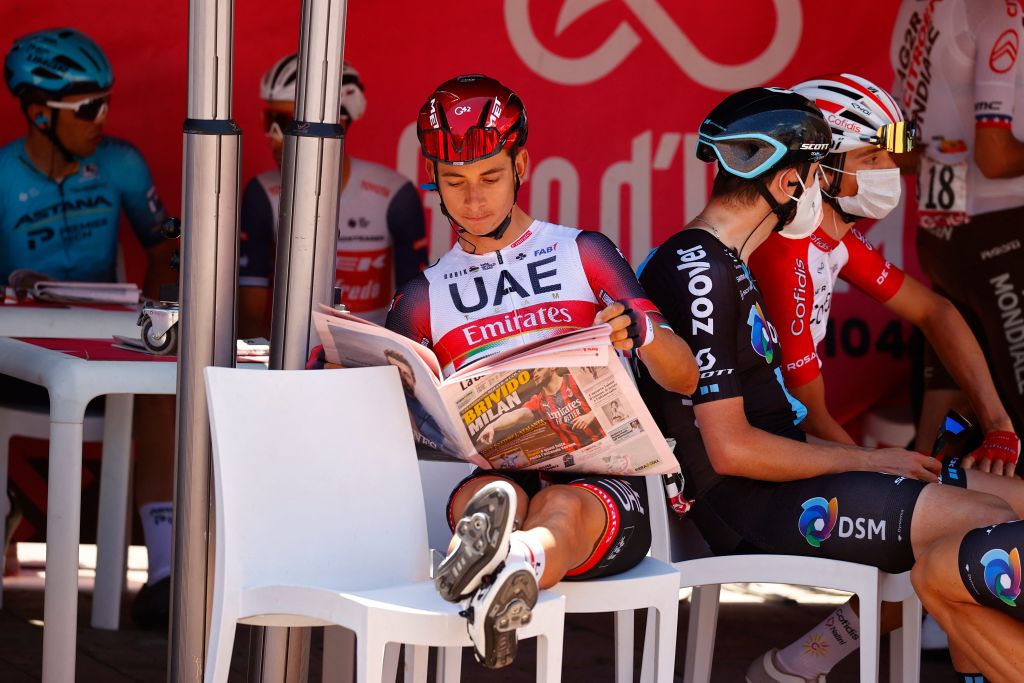
“My first memories of the Giro were watching Ivan Basso on the Zoncolan in 2010 - the look in his eyes as he rode up there, hunting the win. That was an inspiration to me as a young rider. Even now, if somebody just casually mentions the the Gavia or the Mortirolo it gives me goose bumps.
But for me, it’s when you’re standing there on the stage in the Giro d’Italia presentation and the MC shouts out your name, that is when it really sinks in; what you’re about to do, where you’re standing. Everything kind of leads to that point, all the training, all the racing and thinking, ‘I’ve worked so hard for this’. You just think, ‘Now we go for it’.
I was the first in my family to follow the Giro on the telly. That’s pretty unusual, because Italians tend to be hugely patriotic about their races, and they all watch them on television. They place the Giro, San Remo and Il Lombardia ahead of even the biggest events such as the Tour. The first thing Italian people ask an Italian pro is if they have taken part in the Giro, not the Tour. That’s partly why my stage win in La Spezia back in 2015 is so special. It’s the high point of my career so far. It was the typical difficult Giro transition stage - twisting, technical roads, up, down, left, right the whole day. Everybody was tired.
I’ve been doing the GC a lot since then, which makes it trickier to go for stage wins from breaks. And to tell the truth, I’ve always had a hard time in the last week as I’ve got there feeling very tired. Having the support of the people of my village, a very small one and which had never had a pro rider before, has been good to have. But sometimes in that last week I’ve felt disappointed, like I’d let them down. The only thing I can think is that I’m young and have most of my career ahead of me.”
Procycling magazine: the best writing and photography from inside the world's toughest sport. Pick up your copy now in all good newsagents and supermarkets, or get a Procycling subscription.
